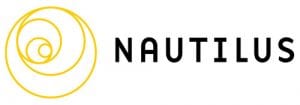Marine Microbes
Deep under the ocean microbes are active and poised to eat whatever comes their way
Deep Sea Science: Deep Sea Reveals Insights On Human
Scientists have discovered bacteria from the deep sea with components that are unrecognizable by the human immune system and may hold important properties in the development of cancer treatments and vaccines, according to a collaborative study published in Science Immunology.
Why Science Labs Love Older Scientists
Sallie Chisholm, a 72-year-old biologist, has been enthralled by a tiny aquatic microbe that she and a team from WHOI discovered in the Atlantic Ocean in 1985.
Move Over, Mars: The Search for Life on Saturn’s Largest Moon
“The great thing about hydrothermal vents is that they provide a lot of energy sources for microbial life that doesn’t include sunlight,” says Julie Huber, a marine chemist at WHOI. Organisms living at hydrothermal vents on Earth’s seafloors, she explains, “can use chemical energy, so that means things like sulphur, iron, hydrogen and methane and they create a base of the food chain.”
Why is it important to study life in the deep sea and even below the seafloor?
Dr Virginia Edgcomb heads a laboratory at WHOI in the US. She spent three months on a ship in the middle of the Indian Ocean conducting research as part of a quest to find evidence of microbial life within the lower oceanic crust.
Scientists returning to site of 1898 shipwreck off Mass. waters that killed more than 190 people
Scientists on Tuesday will once again explore wreckage from the steamship Portland, which sank in 1898 in waters off Massachusetts, killing more than 190 people in what became known as the “Titanic of New England.” Via Twitter, the Woods Hole Oceanographic Institution provided details on the planned expedition.
Scientists revived microbes that were more than 100 million years old
Virginia Edgcomb, a microbial ecologist at WHOI who did not participate in the study, told Science Magazine that the study indicates that “microbial life is very persistent and often finds a way to survive.”
Ancient Microbes Spring to Life After 100 Million Years Under the Seafloor
Virginia Edgcomb, a microbial ecologist at WHOI who did not participate in the study, told Science Magazine that the study indicates that “microbial life is very persistent and often finds a way to survive.”
Scientists pull living microbes, possibly 100 million years old, from beneath the sea
Microbes buried beneath the sea floor for more than 100 million years are still alive, a new study reveals. When brought back to the lab and fed, they started to multiply. The microbes are oxygen-loving species that somehow exist on what little of the gas diffuses from the ocean surface deep into the seabed. The new work demonstrates “microbial life is very persistent, and often finds a way to survive,” says Virginia Edgcomb, a microbial ecologist at WHOI who was not involved in the work.
The Ocean’s Carbon Cycle is Controlled by…Tiny Plankton?
The ocean plays a major role in the global carbon cycle. The driving force comes from tiny plankton that produce organic carbon through photosynthesis, like plants on land.
The Long-Lasting Legacy of Deep-Sea
Mining for rare metals can involve a good amount of detective work. It can take time and skill to find the most abundant sources. But in the deep ocean, metallic deposits sit atop the seafloor in full view—a tantalizing sight for those interested in harvesting polymetallic nodules.
The Last Place on Earth We’d Ever Expect to Find Life
Microbial life, almost unbelievably resilient, abides in boiling hot springs and bone-dry deserts, in pools of acid and polar ice, kilometers up into the sky and kilometers below the ocean floor.
Former Falmouth students credited in new study
Rebecca Cox and Sarah Lott were interns at the Woods Hole Oceanographic Institution when they became a part of the breakthrough study, which found microorganisms living hundreds of meters beneath the seafloor.
Institutes Team Up To Deliver New Graduate Field Course
A partnership between BIOS and two Massachusetts-based institutions was strengthened with the addition of a new microbial oceanography course.
Ocean Microbes: Novel Study Underscores Microbial Individuality
“Genetic information can teach us a lot about ecology, and these may be photosynthetic organisms that were unnoticed before,” said Maria Pachiadaki, a former Bigelow Laboratory postdoctoral researcher who is now an assistant scientist at Woods Hole Oceanographic Institution, and the lead author on the paper. “If experiments confirm what the genes suggest, this is an important microbial group to consider in ocean carbon studies.”
Whales may owe their efficient digestion to millions of tiny microbes
A study by NSF-funded researchers at WHOI shows that the microbial communities inside whales may play an important role in the digestion of one of the ocean’s most abundant carbon-rich lipids: wax esters.
Forbes: Arsenic-Breathing Microbes Found In The Open Ocean
Microbial communities demonstrate high turnover
mentions Dennis McGillicuddy
Life Without Guts
Piece and accompanying video highlights the Alvin sub and the discovery of hydrothermal vent life
The coral – microbe connection
quotes Amy Apprill and mentions WHOI
Could a new plastic-eating bacteria help combat this pollution scourge?
quotes Tracy Mincer and mentions WHOI
Researchers discover plastic-loving bacteria in recycling plant
quotes Chris Reddy and mentions WHOI
These newly discovered bacteria can eat plastic bottles
quotes Tracy Mincer and mentions WHOI
Fossils Show How Ancient Seafloor Gave Rise to Life
quotes Frieder Klein and mentions WHOI


